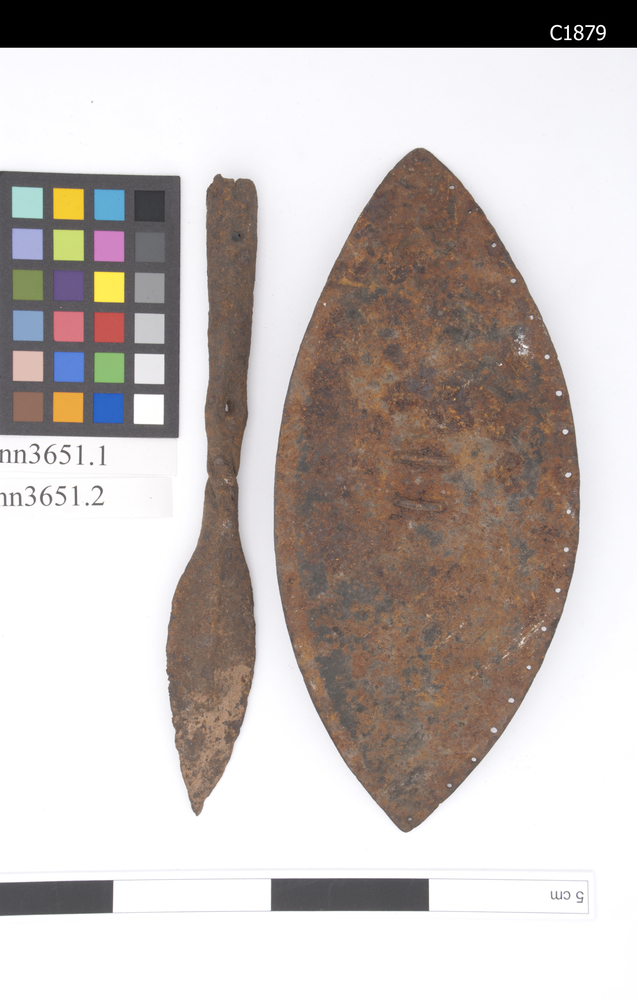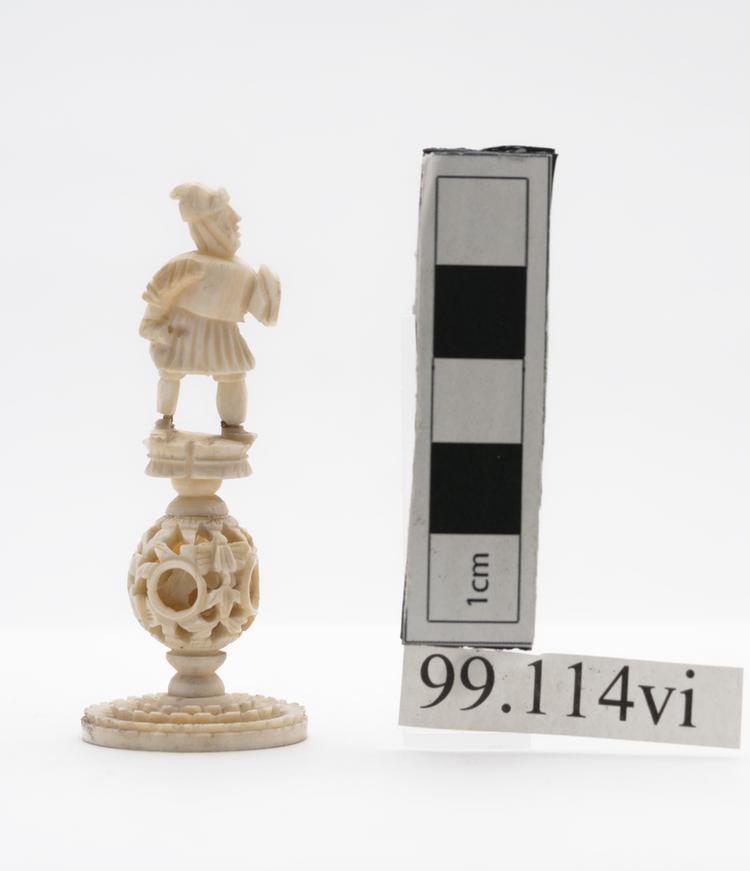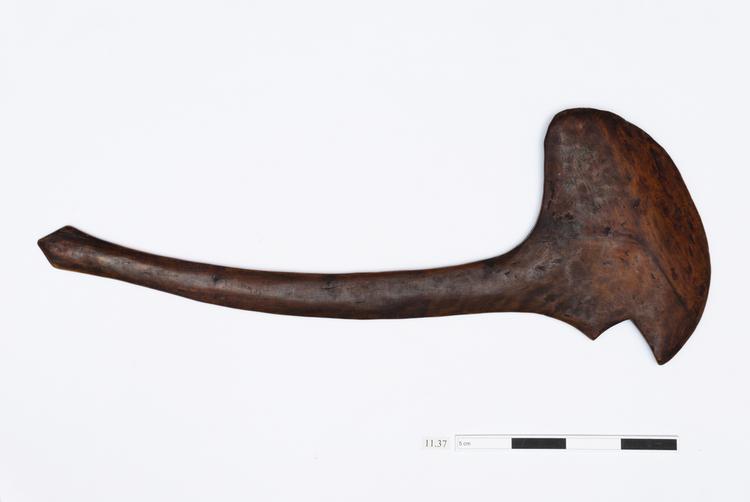Rectangular skirt cloth, sarung, unsewn, of cream cotton textile decorated with one-sided batik. The patterning in red on a cream ground shows Chinese and European influence. Blue details have been added in the 'colet' technique. The 'papan' panel to the left of the tumpal triangular motifs is missing. The textile has a cream coloured ribbon sewn along one of the longer sides. The other 3 sides have wide hems sewn by hand. The incomplete 'kepala' panel consists of the tumpal with its dentate motifs either side of a red ground decorated with small floral motifs. The triangles also each contain floral motifs and a rectangular motif. This is framed by a narrow border which contains an undulating line with small floral motifs which also runs along one longer side. The 'papan' panel has been subdivided by diagonals containing linked diamond motifs and has scalloped edges. Each section contains a foliate motif with seeds resembling oak leaves. This is separated form the main body of the cloth ('badan') by a stripe containing a wider undulating line with floral motifs. The ' badan' panel is decorated with floral motifs arranged in rows interspersed with smaller floral motifs and 2 different bird motifs. The textile is worn and badly torn, and has been darned with different coloured threads in several places.
skirt; textile
Continue exploring anthropology
Collection Information
These objects are only a part of our collections, of which there are more than 350,000 objects. This information comes from our collections database. Some of this is incomplete and there may be errors. This part of the website is also still under construction, so there may be some fields repeated or incorrectly formatted information.
The database retains language taken from historical documents to help research. Please note that some records may feature language and reflect systems of thinking that are outdated and offensive. The database also includes information on objects that are considered secret or sacred by some communities.
If you have any further information about objects in our collections, can suggest corrections to our information or if you see content requiring immediate action, please contact us: enquiry@horniman.ac.uk






